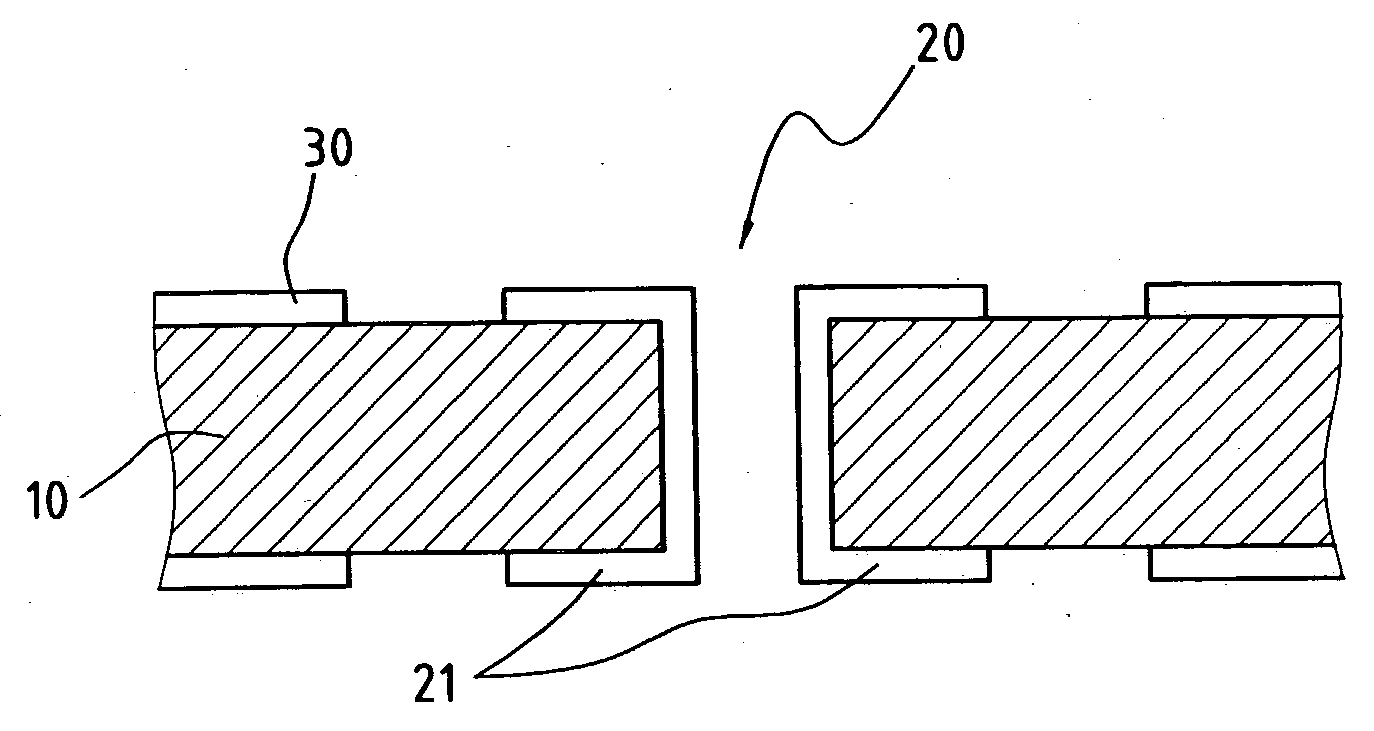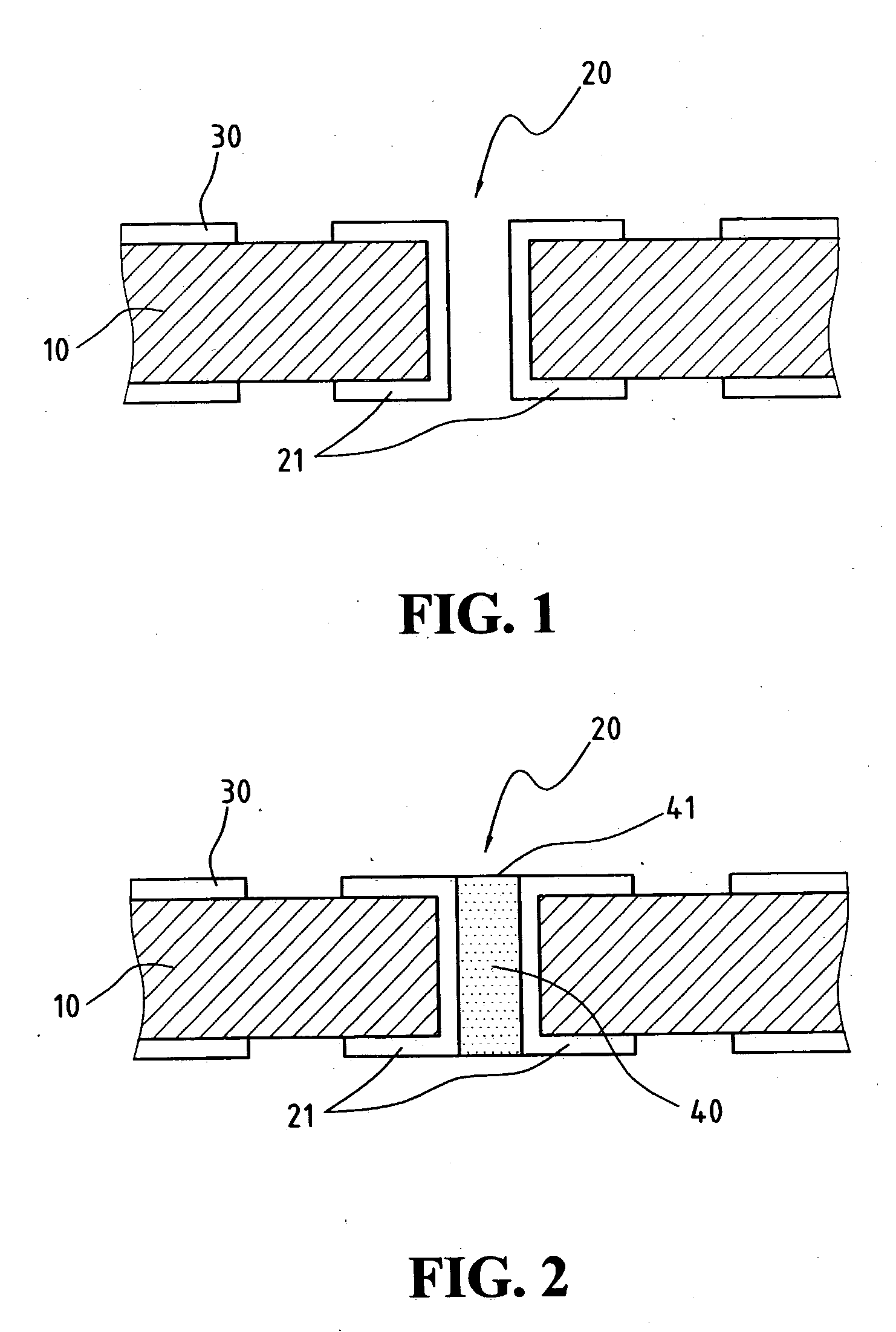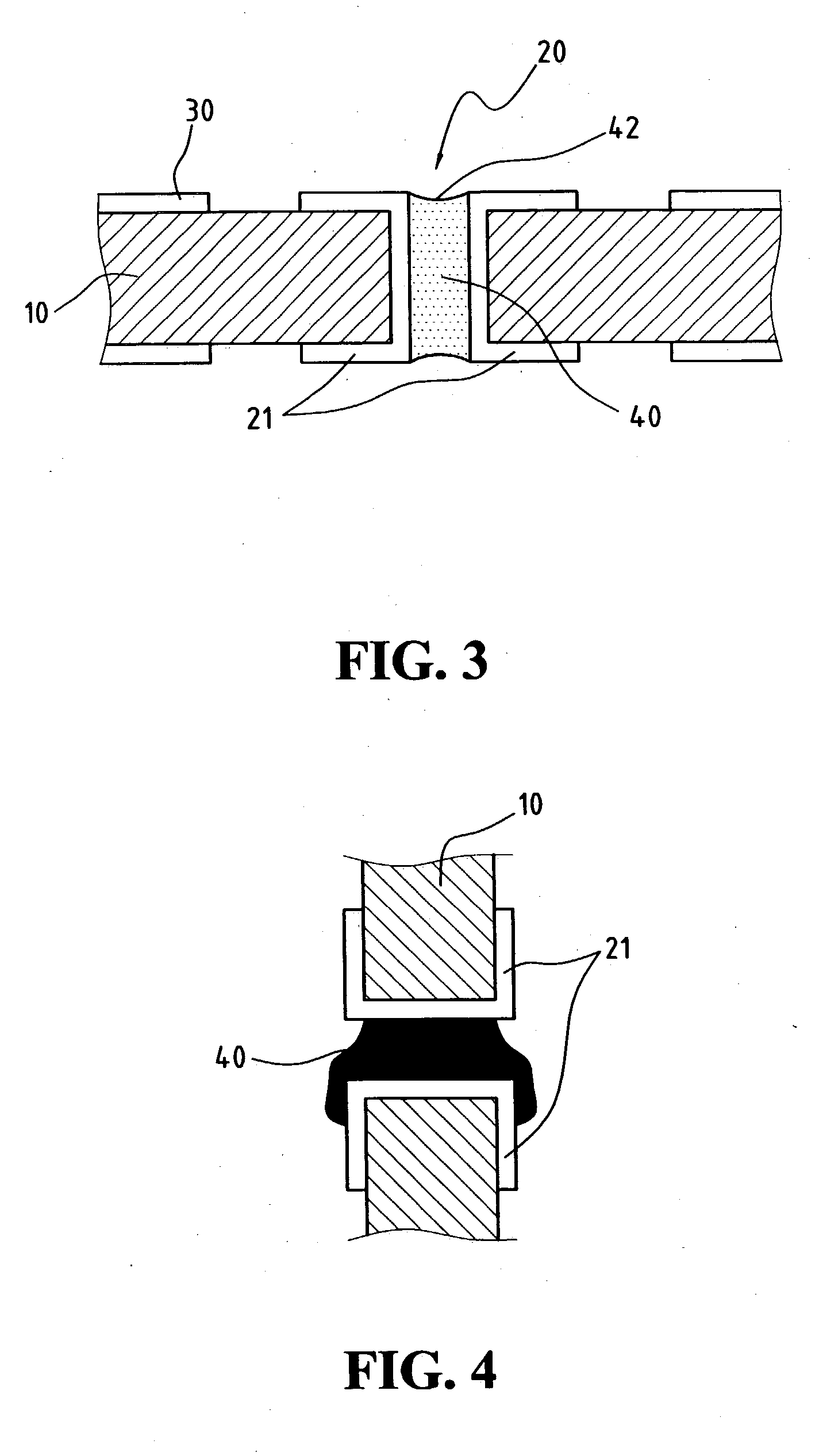Solventless thermosetting photosensitive via-filling material
a photosensitive via-filling and thermosetting technology, applied in the direction of photosensitive materials, auxiliary/base layers of photosensitive materials, instruments, etc., can solve the problems of complex via-filling process, broken signal transmission, and product uselessness
- Summary
- Abstract
- Description
- Claims
- Application Information
AI Technical Summary
Benefits of technology
Problems solved by technology
Method used
Image
Examples
example 1
[0041] A solventless thermosetting photosensitive via-filling material consists of 100 parts by weight bisphenol-A epoxy resins (LG N-730), 6 parts by weight 2,4-diamino-6[2′-methylimidazoly-(1′)] ethyl-S-triazine isocyanuric acid addition compound, 20 parts by weight tris(2-hydroxyethyl) isocyanurate triacrylate, 2 parts by weight 2-methyl-1-[4-(methylthio)phenyl]-2-morpholinopropanone, 0.2 parts by weight 2-isopropyl thioxanthone, 2.5 parts by weight Aerosil R974 and 3 parts by weight Defoamer KS-66.
[0042] The solventless thermosetting photosensitive via-filling material is used to fill up the via by screen printing on PCB. Then, the PCB is mounted in a 7 kW ultraviolet exposure machine for a short-time exposure with exposure energy of 1 mJ / cm2. As a result, solid barrier films with a thickness of greater than 50 μm form at both ends of the via-filling material. The solid barrier films will prevent the internal solventless thermosetting photosensitive material from flowing out of...
example 2
[0044] A solventless thermosetting photosensitive via-filling material consists of 100 parts by weight bisphenol-F epoxy resins (Epon-862), 6 parts by weight 2,4-diamino-6[2′-methylimidazoly-(1′)] ethyl-S-triazine isocyanuric acid addition compound, 15 parts by weight trimethylolpropane triacrylate, 2 parts by weight 2-methyl-1-[4-(methylthio)phenyl]-2-morpholinopropanone, 0.2 parts by weight 2-isopropyl thioxanthone, 2.5 parts by weight Aerosil R974 and 3 parts by weight Defoamer KS-66.
[0045] The solventless thermosetting photosensitive via-filling material is used to fill up the via by screen printing on PCB. Then, the PCB is mounted in a 7 kW ultraviolet exposure machine for a short-time exposure with exposure energy of 1 mJ / cm2. As a result, solid barrier films with a thickness of greater than 50 μm form at both ends of the via-filling material. The solid barrier films prevent the internal solventless thermosetting photosensitive material from flowing out of via.
[0046] After u...
PUM
| Property | Measurement | Unit |
|---|---|---|
| temperature | aaaaa | aaaaa |
| thickness | aaaaa | aaaaa |
| temperature | aaaaa | aaaaa |
Abstract
Description
Claims
Application Information
 Login to View More
Login to View More - R&D
- Intellectual Property
- Life Sciences
- Materials
- Tech Scout
- Unparalleled Data Quality
- Higher Quality Content
- 60% Fewer Hallucinations
Browse by: Latest US Patents, China's latest patents, Technical Efficacy Thesaurus, Application Domain, Technology Topic, Popular Technical Reports.
© 2025 PatSnap. All rights reserved.Legal|Privacy policy|Modern Slavery Act Transparency Statement|Sitemap|About US| Contact US: help@patsnap.com



